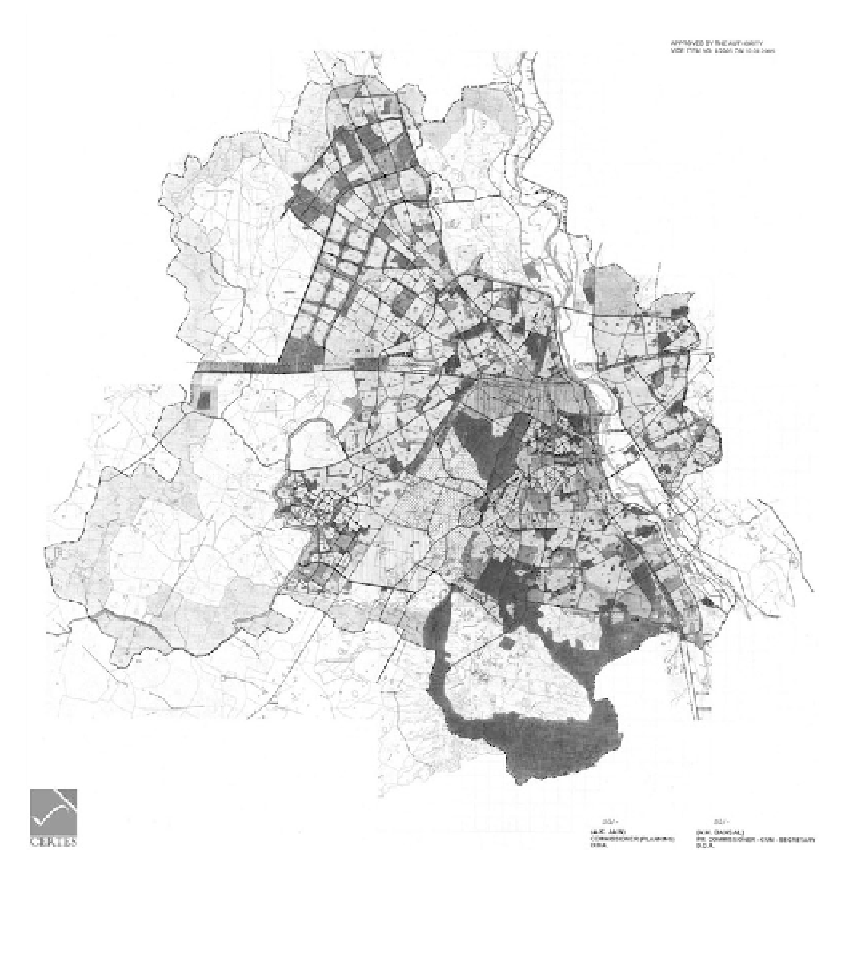Environmental Engineering Reference
In-Depth Information
Figure 5.12
Land-use plan for Delhi 2021
Source
: Delhi Development Authority, 2010.
are increasing rapidly in share. The numbers of auto rickshaws were affected by the introduction
of compressed natural gas (CNG) and the clean air regulations, with a high level of substitution
into scooters, motorcycles and cars (Roychowdhury et al., 2006). The informal settlements
tend to develop around employment centres in the city and inhabitants tend to rely on walking
(particularly females), bus or cycle for travel.
From the 1980s to the present day, Delhi, like much of the rest of India, has experienced
a rapid rise in cross-sectoral CO2 emissions. Delhi has a slightly higher motorisation rate than
the national levels, reflecting higher income and consumption levels. The projections for India



